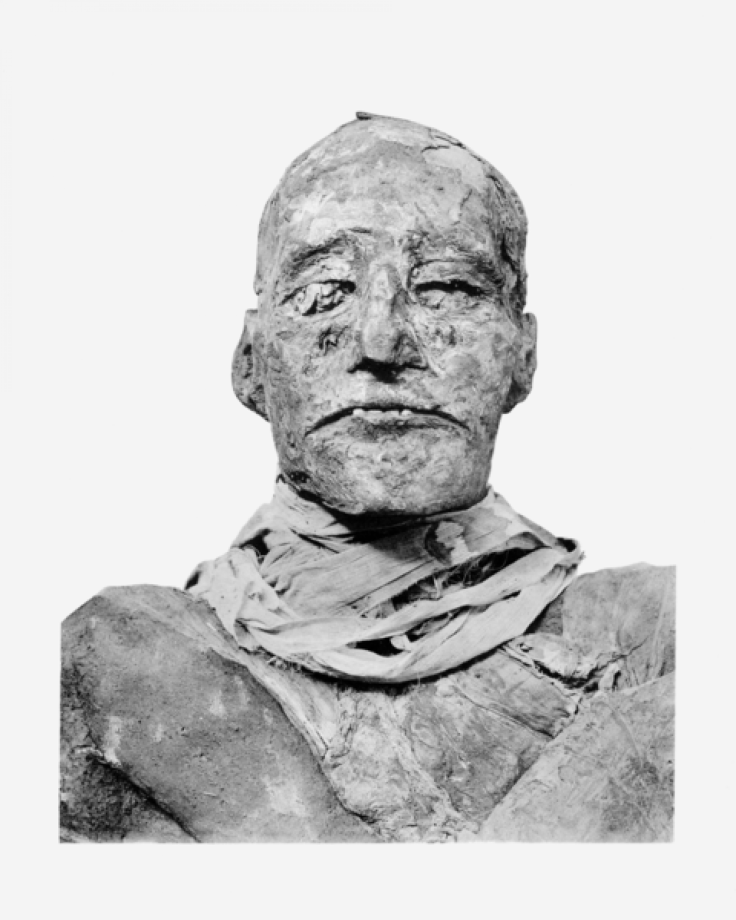Ramses III Had Throat Slashed, Researchers Discover, Suggest Pharaoh Was Killed In 'Harem Conspiracy'

Researchers have discovered that the Egyptian pharaoh Ramses III died after his throat was slit.
The pharaoh's death has been shrouded in mystery and speculation for centuries; however, a report published Monday in the British medical journal BMJ suggests that he may, in fact, have been assassinated by family members, as has often been thought.
Researchers examined the mummy of Ramses III using CT scans and discovered a 7-centimeter-wide, bone-deep slash at his throat.
They believe the almost certainly fatal injury coincides with the "harem conspiracy" that proposes Ramses III’s secondary queen, Tiy, and her son, Prince Pentawere, planned to kill the pharaoh in order to have Pentawere ascend to the throne as Ramses IV, according to the Los Angeles Times.
“The big cut is in his throat and it was very deep and large,” said Albert Zink, an anthropologist at the European Academy, who was involved in the research. “It would have killed him immediately.”
As per the conspiracy, Ramses III had an older son from a more senior wife that was to be his successor. Tiy and Pentawere had supposedly planned to also kill the succeeding son, but upon the death of Ramses III the older son became Ramses IV.
Tiy, Pentawere and dozens of co-conspirators were caught and put on trial; however, the official records of trial, called the Judicial Papyrus of Turin do not specify whether Ramses III had been murdered of or died at a later date, the Times details.
The CT scans of Ramses III's mummy also discovered an amulet called the the Eye of Horus inside the wound.
“This was most probably done by the ancient embalmers,” Dr. Zink said. “They tried to heal his wound for his afterlife.”
In addition, researchers also examined a mummy that was found alongside Ramses III. Referred to as Unknown Man E, the mummy is believed to be that of Ramses III's traitorous son Pentawere.
A bone analysis suggests that the man was between 18 and 20 years old. He was also not fully embalmed, as his organs or brains were left inside his body, instead of being removed. He was also wrapped in goat's skin, considered to be impure in ancient Egyptian customs.
“It is obvious this mummy was being punished in some way for his afterlife,” Dr. Zink said.
While, researchers cannot be certain that the second mummy is in fact Pentawere, a genetic analysis discovered several matching DNA markers and identical Y-chromosome DNA, the Times notes, suggesting that the two may have been father and son.
© Copyright IBTimes 2024. All rights reserved.












